Volcanic Twilight
Volcanic Twilight: A Spectacular Atmospheric Phenomenon
Twilight is a magical time of day when the sky transitions from day to night, and the atmosphere puts on a breathtaking display of colors. However, there are certain events that can make twilight even more extraordinary. One such phenomenon is known as volcanic twilight, which occurs when volcanic eruptions inject fine dust and sulfate aerosols into the stratosphere. These suspended particles scatter sunlight at high altitudes, creating mesmerizing twilights all over the Northern Hemisphere.
During volcanic twilight, the sun appears low on the horizon, causing a noticeable change in the color of the western sky. The usual bluish-white hue transforms into a warm yellowish glow. As the sun sets, a distinct yellow band emerges along the horizon, marking the beginning of the "twilight arch." This arch-shaped glow extends up to 90° on each side of the sun's location, while high clouds continue to bask in sunlight.
As twilight progresses, the sky above darkens into a deep blue, intensifying the yellow glow on the horizon. The setting sun casts its rays on lower clouds, creating a captivating scene. At this stage, a phenomenon known as the "Purple light" emerges at the center of the arch. While this purple light can also be observed in non-volcanic stratospheres, it becomes particularly prominent following volcanic eruptions.
The next phase of volcanic twilight reveals faint crepuscular rays, which may originate from either tropospheric clouds over the horizon or from dust and sulfate particles in the stratosphere. These rays add an ethereal touch to the already mesmerizing display. Meanwhile, the high tropospheric clouds start to redden as they are illuminated by the setting sun's rays that have passed through the lower atmosphere.
The twilight arch reaches its peak intensity during this time, accompanied by the maximum strength of the purple light. The overhead sky retains its deep blue color, thanks to the filtering effect of stratospheric ozone, which blocks out the red wavelengths of sunlight. As the minutes pass, the twilight arch begins to fade, and the purple light gradually diminishes. Less sunlight reaches the high atmosphere, leading to a reduction in the overall intensity of the display.
The grand finale of volcanic twilight showcases a deep red horizon topped by shades of purple and pink. This stunning combination creates a captivating spectacle that leaves observers in awe. The fine structure visible during this time, characterized by nearly horizontal striations, serves as a telltale sign of stratospheric dust and aerosol presence.
Volcanic twilight is a reminder of the interconnectedness of Earth's systems and the influence that natural events can have on our daily experiences. It offers a unique opportunity to witness the beauty and complexity of atmospheric optics. So, keep an eye on the horizon and embrace the enchanting moments when nature paints the sky with vibrant colors during volcanic twilight.
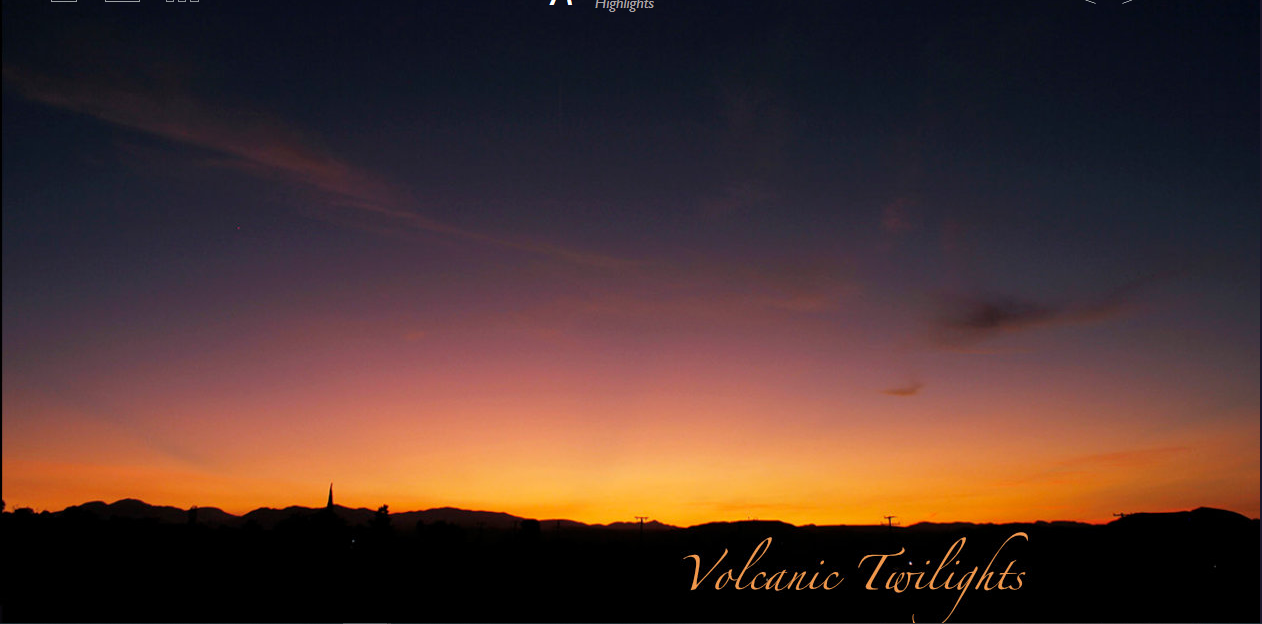

Space artist Don Davis photographed this twilight time sequence from California on August 22, '19.
The stratosphere currently contains fine dust and sulfate aerosol injected by volcanic eruptions. The culprits are probably Raikoke in the Kiril Islands of far eastern Russia and
Ulawun in New Guinea.
There are unusual twilights all over the Northern Hemisphere as the dust and aerosol scatter high altitude sunlight. The sun is low and the western horizon changes from bluish white to a yellowish hue.

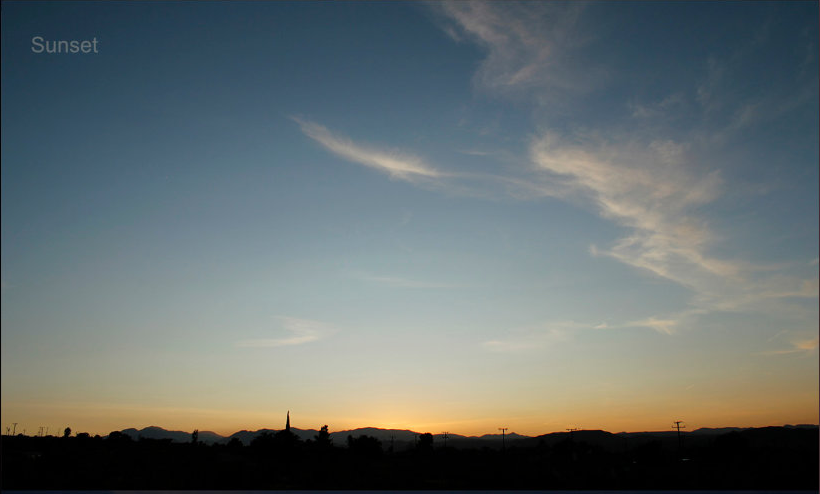
Sunset.
A yellow band forms along the horizon. This is the start of the "twilight arch" - a yellow
arch shaped glow extending up to 90° along the horizon each side of the sun's location.
The ground is dark. High clouds remain in sunlight.

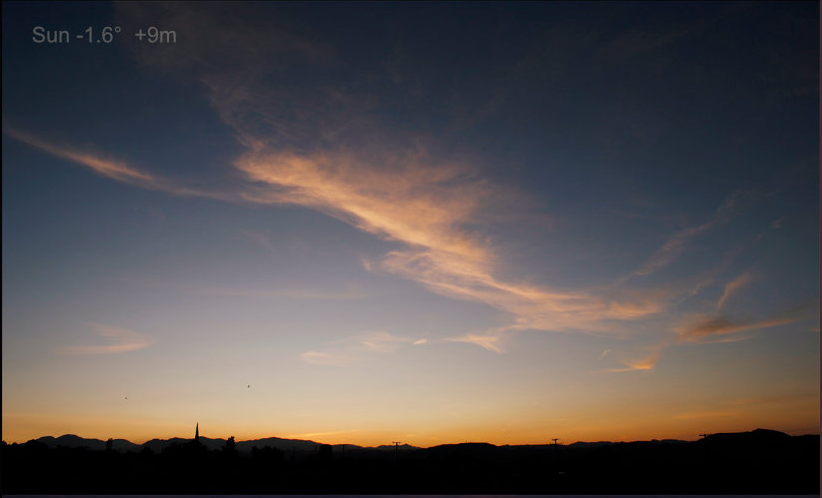
The sky above has turned dark blue. The yellow horizon glow intensifies. The sun sets
on lower clouds.
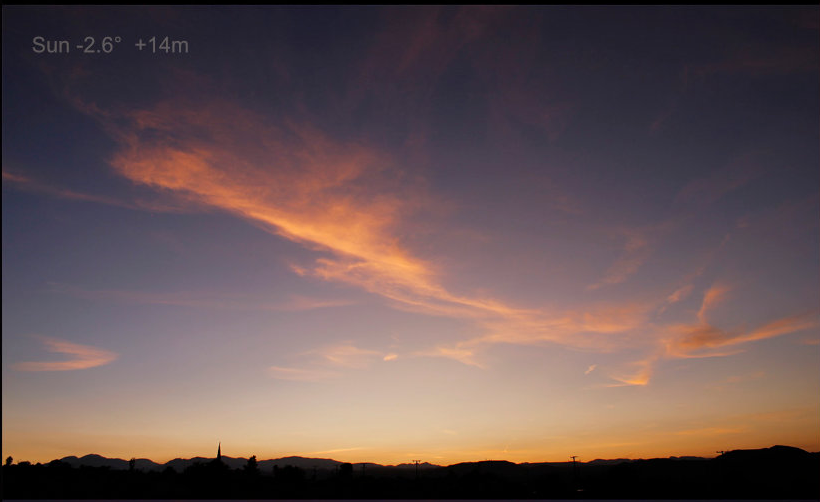
The "Purple light" starts at ccentre.
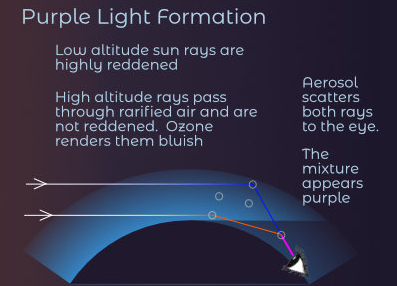

Above the yellow twilight arch the purple light has strengthened. It can be seen in a "non volcanic" stratosphere but it is at its best after volcanic eruptions.
Faint crepuscular rays develop. These could be from tropospheric clouds over the horizon
or from dust/sulfate in the stratosphere.
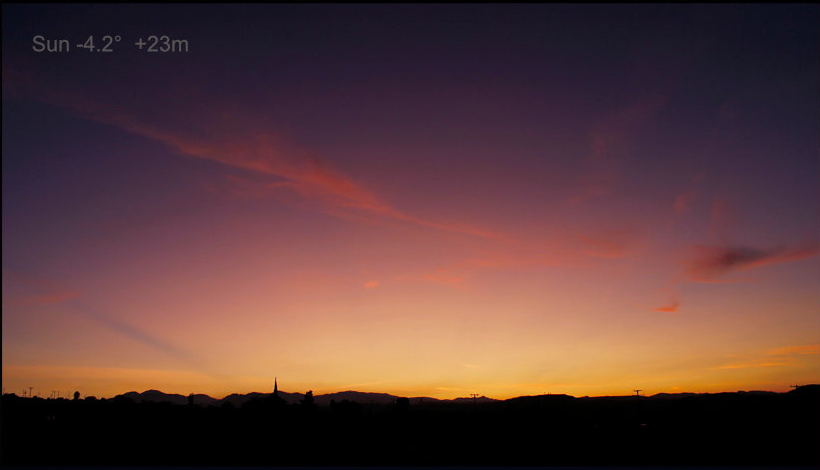
The high troposphere clouds redden as they are lit by a setting sun whose rays have passed deep through the lower atmosphere.
The twilight arch is now intense and topped by the maximum purple light.
At this time the overhead sky remains a deep blue. Stratospheric ozone is filtering out the
reds.

The twilight arch begins its fading to red. the purple light fades too. Less and less sunlight is reaching the high atmosphere.
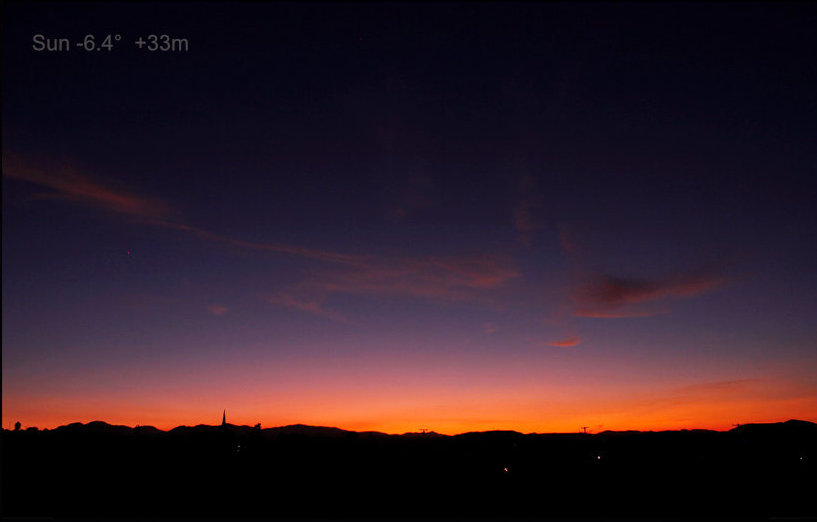
The show ends with a deep red horizon topped by purple/pink.
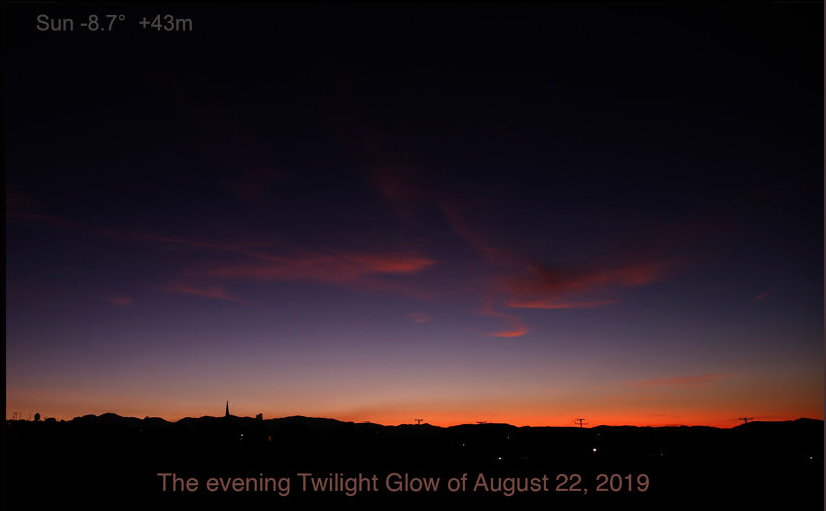
The evening Twilight Glow of August 22, 2019
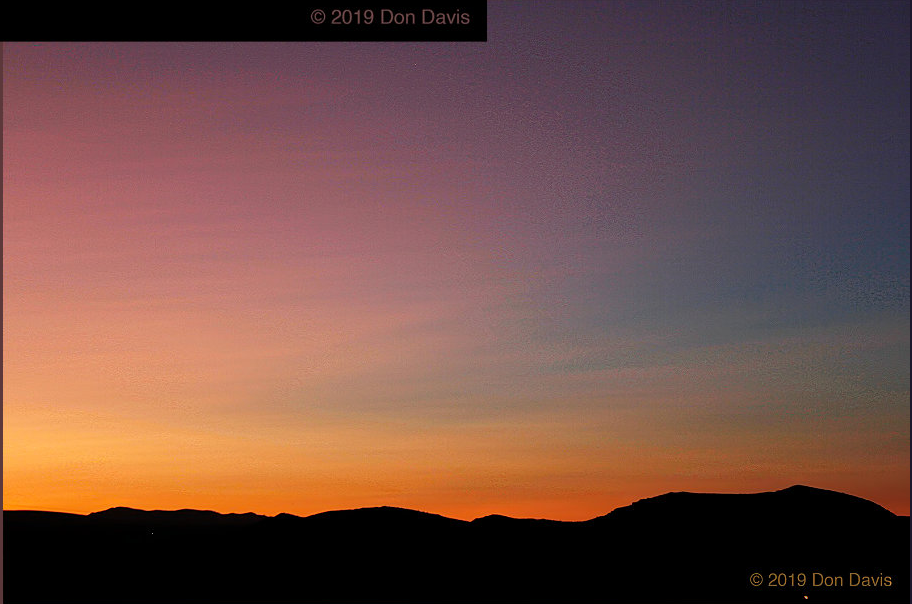
Fine structure, nearly horizontal striations are a sign of stratospheric dust and aerosol.
Don Davis took this image a day or so earlier.
Note: this article has been automatically converted from the old site and may not appear as intended. You can find the original article here.
Reference Atmospheric Optics
If you use any of the definitions, information, or data presented on Atmospheric Optics, please copy the link or reference below to properly credit us as the reference source. Thank you!
-
<a href="https://atoptics.co.uk/blog/volcanic-twilight/">Volcanic Twilight </a>
-
"Volcanic Twilight ". Atmospheric Optics. Accessed on December 22, 2024. https://atoptics.co.uk/blog/volcanic-twilight/.
-
"Volcanic Twilight ". Atmospheric Optics, https://atoptics.co.uk/blog/volcanic-twilight/. Accessed 22 December, 2024
-
Volcanic Twilight . Atmospheric Optics. Retrieved from https://atoptics.co.uk/blog/volcanic-twilight/.